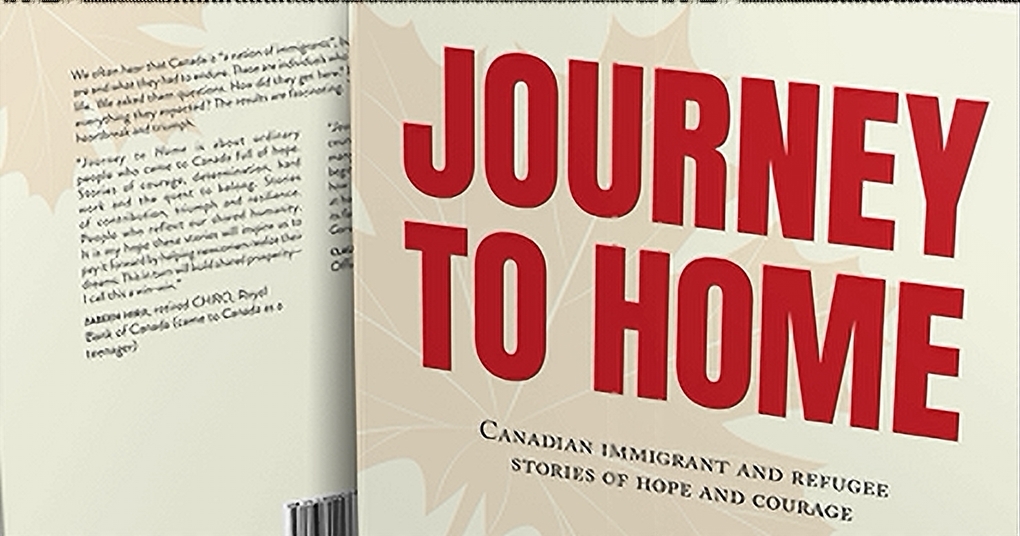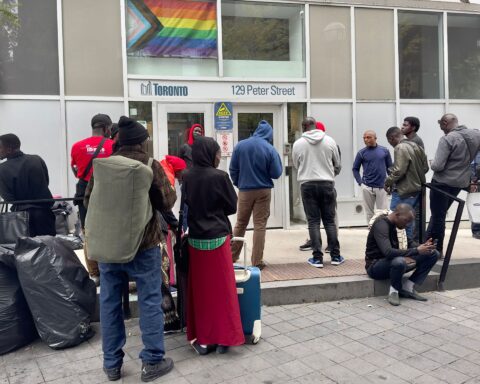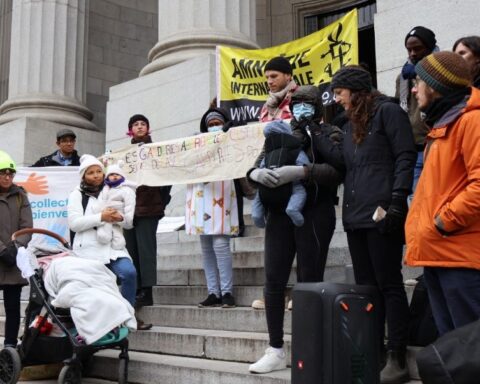What does the pursuit of hope, prosperity and a better life in Canada look and feel like?
That’s the question Azhar Laher and David Garson explore in their most recent book — Journey To Home: Canadian Immigrant and Refugee Stories of Hope and Courage — which features dozens of first-hand stories told through the eyes of immigrants and refugees from over 30 countries who moved to Canada more than five years ago.
“With this book, we tried to understand how moving from one country to another — where you don’t speak the language, you don’t really necessarily have familiarity with the customs or the mores, or anything of the sort, but you are expected to adapt — looks like. What is your experience like?” Garson, a renowned Canadian immigration lawyer, told New Canadian Media.
Laher, a professor of leadership and human resources at Seneca College and the lead author, adds the book is meant to “inform other Canadians about the impact that immigrants make in society, to inform on what challenges they go through and also to help prospective new Canadians.”
One of the remarkable things the authors learned through the research is that there are more similarities than differences between Indigenous Peoples across Canada and immigrants, given the discrimination to which each group is subjected.
“We did not expect this,” Garson says.
“There is irony in that those who were here long before us, can identify more easily with those who just arrived.”
Another “huge theme” of the book, Garson says, is the struggle for recognition of educational and professional credentials of immigrants’ previous work experience.
“Many contributors reflect surprise and disappointment that their qualifications, whether education (or) work experience…were not treated as well as they would like,” he observes.
A layer of sadness
Garson says the project helped both authors realize that although there are many triumphant immigration stories, there is still “a layer of sadness and a layer of disappointment” with which immigrants and refugees live.
“It isn’t like, ‘We-made-it-to-Canada-such-a-wonderful-place-we’re-so-thrilled-to-be-here’ kind of thing,” he says, though he recognizes there is lot of gratitude from those who do make it.
“But there’s also a bit of heartbreak — a bit of a sadness in these reflections,” he adds.

Garson says he also learned that many of these accounts of struggle and disappointment come primarily from the perceptions of subtle and indirect exclusion rather than from overt racism. Language, he notes, is often the main barrier reported.
“From what I could see in the stories, I don’t think too many had any overt racist encounters. I think for the most part, there was a subtle sort of discrimination in terms of education credentials, or their work experience, how they were treated — things like that,” he says.
“But it was subtle. It wasn’t overt in the sense of not feeling included or feeling like ‘the other.'”
Little jingles
Laher says that as he embarked on the project, he drew inspiration from a quote by Dr. Kwame McKenzie, from the Wellesley Institute, affirming that “Canada has been built by immigrants, and they are our future.”
Laher began collecting the contributions over the course of the pandemic. The book is his third, and has been widely received, with more than 3,000 copies sold to date since its publication last November.
Garson attributes the success of the book to the contributors, who are located all over Canada (though most reside in Ontario) and who represent a balanced mix of gender and cultural perspectives.
“I think their stories are excellent…some are funny, some sad, some were triumphant, some not, but it makes up for it,” he says as he explains that he likes to compare their “different voices” to music “that changes tempo and keeps you interested.”
“The short stories are almost like little jingles,” he adds. “And you hear each one.”
Laher says he designed the questionnaire for the book’s contributors and sent it out to his network and social media. As the number of respondents grew, Garson stepped in.
When reaching out to contributors, the authors gave them a fair amount of time to respond with their stories in writing.
Once contributions were in, Laher and Garson’s job was to edit the stories to ensure consistency, without losing the “voice” of the writers. Seneca College helped with graphic design for the book.
“We wanted this to be an honest kind of recounting of their personal journey after they got here,” Garson says.
“The contributors themselves are the heroes of their own stories and this book reflects their true feelings, their hearts.”
A guide
The book is a testament of “what people experience” and is meant to serve as a guide for future newcomers, says Garson, which means that while hope is a big theme in the book, it all comes from a “realistic” perspective. “These are (people’s) actual voices,” he says.
Garson says he’s learned that while “some people are very content and happy and thrilled where they are,” others are “a bit sad that they don’t think the experience was what they would have wanted it to be.”
“But I think there’s, again, more sadness than I would have expected,” he says, though he always thinks of their journey as an opportunity to move forward.

In that vein, Laher says the book makes him wonder how the story of immigration will evolve.
“I often think about how this story of immigration will be told by my children to their grandchildren,” he says, adding that he hopes new generations of immigrants will continue helping each other to succeed.
“If the book can elevate the discussion about the value and impact that immigrants make to Canada, then we have fulfilled our mission,” Laher says.
The book is available on Amazon in both hardcover and digital formats.
Correction: An earlier version of this story did not emphasize enough the editors’ endeavour to retain the “voice” of the writers.
Naser Miftari is an independent media researcher. His broad area of interest is in political theory and his research focus is on the future of public broadcasting, media governance and political economy of communication. For more than ten years he was a writer and editor for Koha Ditore one of leading newspapers in South East Europe. He is an active contributor in media research studies and has also taught graduate and undergraduate courses in media and political science at colleges and universities in United States and South East Europe. More recently he served as a contributor on global journalism issues with the Toronto-based Canadian Journalists for Freedom of Expression (CJFE) and in 2016 he was a research fellow at King’s College in New York.





